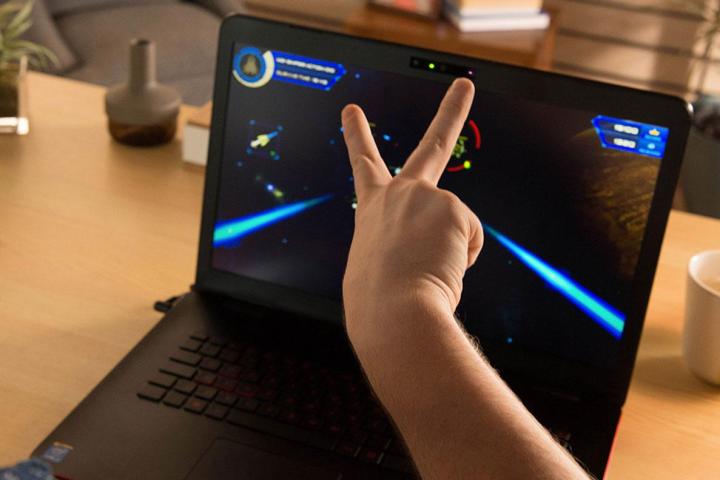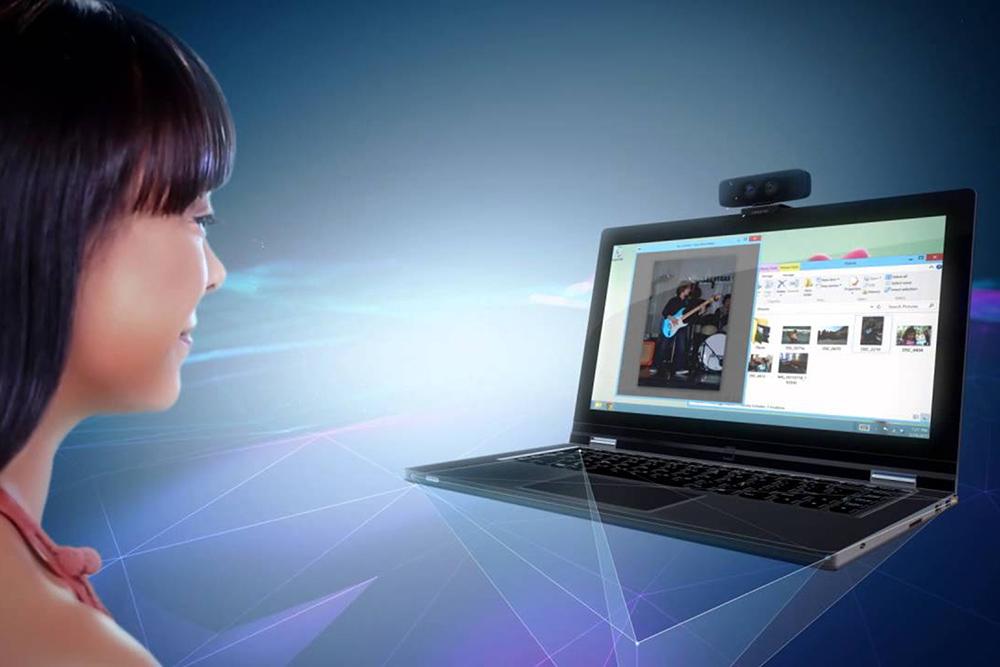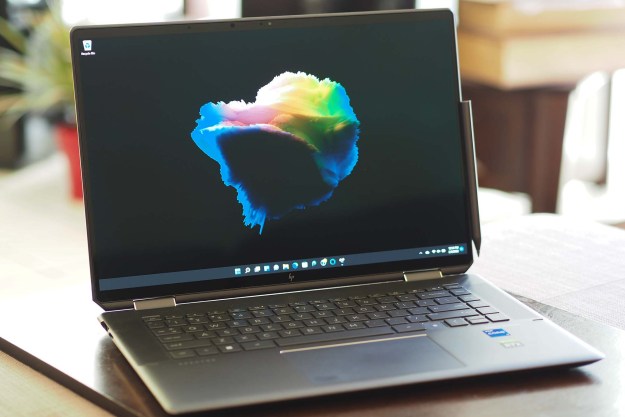
Originally, perceptual computing intended to be a standard feature for all Intel-powered ultrabooks, all-in-ones, and tablets from Acer, Asus, Dell, Fujitsu, Lenovo, and NEC. On the productivity side, it was said to help users scan three-dimensional objects to make 3D models, or could be used to create a green-screen effect without an actual green screen. For leisure, Intel showed off demos of games and
Suffice to say, at the time, motion controls weren’t exactly in high fashion. Despite being advertised as more affordable and practical than Microsoft’s Kinect, consumer interest in 3D motion-tracking cameras seemed to be waning. But Intel didn’t give up.
Finding a home
Like the Leap Motion Controller before it, early reactions to Intel’s “perceptual computing” concept were lukewarm. It appeared the technology was little more than a way to incentivize CPU upgrades in a world where people were holding on to their archaic desktop machines for much longer than they probably should. As such, the technology was re-revealed in 2014 as RealSense.
Though it was posed as a standard integrated feature for many then-anticipated devices, at this point, RealSense wasn’t just a means to get customers to buy into Intel processors — it was also a USB webcam that virtually anyone could take advantage of.
While expanding its reach into perceptual computing seemed odd to some, Intel’s did it in support of its traditional processor business. Modern processors have become too good, in the sense that users rarely see reason to upgrade with frequency. Perceptual computing requires a great deal of processing power — and thus, if it became popular, might encourage users to upgrade.
That was the theory, at least. But Intel’s RealSense still lacked compelling applications. The company had demos to show, but very little in the way of useful software that an average person might want to have at home. The technology struggled as a result, and few practical applications of RealSense were introduced through 2014.
Sometimes, you need a partner

At CES 2015, Intel took its commitment to RealSense a step further by separating the technology into two vastly different categories. Rather than confining gesture and voice controls to a single platform, the RealSense 3D camera would respond to body language, while VoiceAssist would serve as a sort of Siri for Windows.
Intel also came around to the fact it needed some serious partners if RealSense was to ever havethe kind of real-world applications that sell technology to the average user. To address that, Intel entered a partnership with Razer and, around the same time, Google.
With Razer, Intel worked on a 3D-sensing camera for consumer-end VR and
Intel’s other collaboration, with Google, saw RealSense combine with Project Tango. For those not in the know, Project Tango is Google’s attempt at mapping 3D environments based on the movements of an Android phone. It’s planned to offer features like indoor navigation, area learning, VR, 3D scanning, and more. Naturally, the marriage between Intel’s 3D image sensing technology and Google’s software seemed like fate.
Perceptual computing finally realized
Fast forward to last month, at CES 2016 in Las Vegas, where one of the most critical appearances every year is Lenovo. This year, the company decided to make the Intel RealSense available as an optional add-on for several systems, and also put out a monitor with a RealSense camera, complete with Windows Hello support. Likewise, Acer and other PC makers offered similar options.
Unfortunately, even with the backing of the aforementioned reputable computer companies, RealSense still suffers limited appeal. It must prove its value as something more than an alternative to entering your password at startup. Intel has addressed this by partnering with companies that make drones, robots, and games.

Yuneec’s Typhoon H, the “world’s first fully intelligence consumer drone,” utilizes RealSense to detect the distance between objects in its path, thereby preventing collision. Similarly, the bizarrely sentient Ninebot hoverboard from Segway, while unable to live up to its widely accepted name by actually hovering, does use the RealSense camera to detect and communicate with real human beings.
My favorite addition to the RealSense repertoire, however, takes advantage of software applications Uraniom and itSeez3D, two poorly spelled technologies capable of working together to scan your real face into games like Fallout 4. It’s genius, and it’s astonishing Microsoft didn’t try something like this this with Kinect. Plus, as The Verge reported, it actually does come pretty damn close to making your 3D scanned face look like it belongs in the game.
The fight isn’t over
While RealSense is in a much better position now than it was three years ago, it still has problems. Despite adding Project Tango to the mix, it’s evident that there isn’t much else for RealSense to offer on mobile. It’s severely lacking on an integral front, as software support on both RealSense and Tango is next to invisible.
Price is also an issue. RealSense cameras still add to the price of any product, and I’m not sure that many users will tick that box when presented the option on a PC. The other products will RealSense are expensive, too. don’t know that many people will take interest in buying an $1,800 drone or a Segway that talks to you, but I’ve been wrong before.
But while the technology still faces challenges, it’s in much better shape than it was at its debut. Intel could’ve given up, but instead it persevered, and has found new ways to put RealSense to use. If this trend keeps up, Intel just may make me a believer — and everyone else, too.


